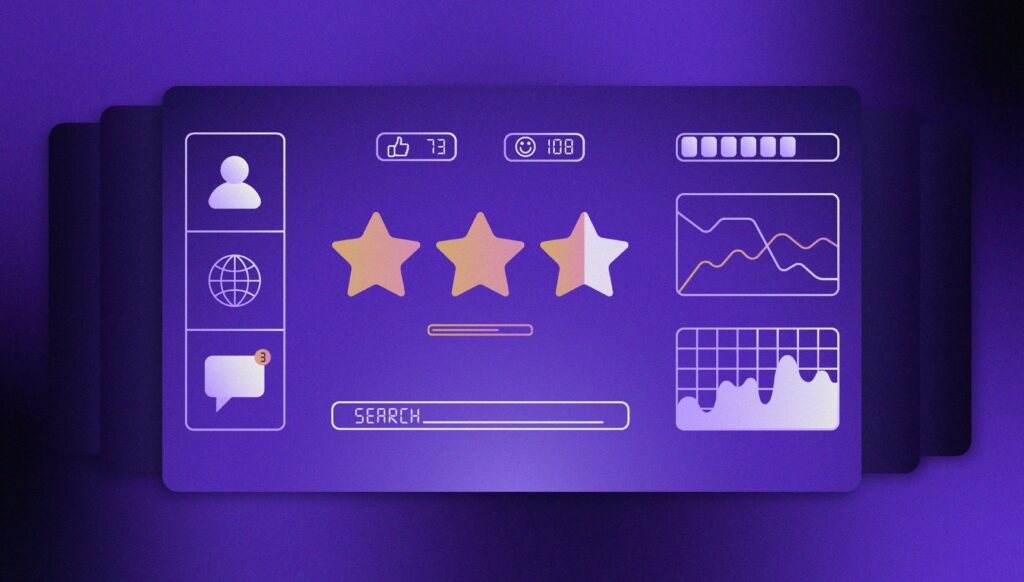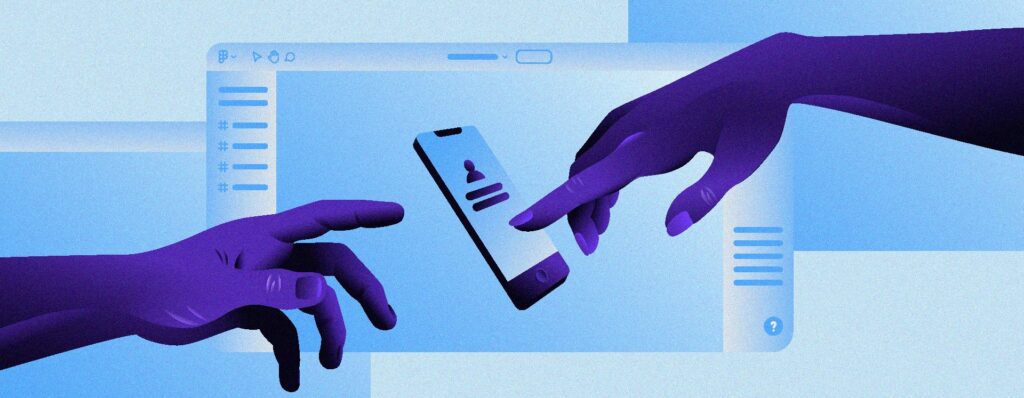Customer experience vs. user experience: Why the difference matters
The ever-evolving digital landscape challenges businesses to stay ahead by delivering exceptional customer experiences. “Customer Experience” (CX) and “User Experience” (UX) are two terms that often come into play. While they may sound interchangeable, they represent distinct aspects of a product or service journey, each holding its significance.
Understanding the nuances between customer and user experience is crucial for industry professionals and anyone seeking to create impactful digital solutions. In this blog, we delve deep into the world of CX and UX, dissecting their differences and uncovering why grasping this disparity is essential for crafting digital experiences that truly resonate with your audience.
What is Customer Experience?
Customer Experience (CX) is a customer’s overall perception and interaction with a brand, product, or service throughout the customer journey. It encompasses every touchpoint and interaction a customer has with a company, from the initial awareness and research stage to the purchase process, post-purchase support, and ongoing engagement.
Customer experience is a cumulative result of multiple interactions and experiences. It includes digital and physical interactions, such as using a website or app, contacting customer support, receiving a product, or visiting a physical store. A positive customer experience results in customer satisfaction, loyalty, and advocacy, which are essential for long-term business success.
What is User Experience?
User Experience (UX) is an individual’s overall experience when interacting with a product, system, or service. It focuses on how users perceive, interact with, and feel about the product or service’s design, usability, and functionality. UX design aims to create products and experiences that are user-centered, intuitive, and enjoyable.
User experience focuses on understanding the user’s goals, motivations, and pain points to create a seamless and satisfying experience. A well-designed UX increases user satisfaction, lowers abandonment rates, and improves user retention.
Customer Experience vs User Experience: What’s the Difference?
Customer Experience (CX) and User Experience (UX) are both related but distinct concepts that focus on different aspects of interactions with a company’s products, services, or brand. Let us look at the breakdown of the key differences between customer experience and user experience.
Scope of Focus
Customer experience encompasses the entire end-to-end journey of a customer’s interactions with a company, including marketing, sales, customer support, and post-purchase experiences. It considers interactions both online and offline, spanning the entire customer journey.
User experience focuses on user interactions with a product, system, or service. It is primarily concerned with the design, usability, and functionality of that product or service.
Target Audience
Customer experience involves a broader range of audiences, such as stakeholders, customers, prospects, partners, and employees. It focuses on how various interactions impact overall brand perception and relationships.
User experience is more user-centric and primarily concerns the experience of individuals who directly engage with a product or service.
Context
Customer experience considers the overall context of a customer’s relationship with the company. It includes marketing communications, brand perception, and customer service interactions.
User experience focuses on the specific context of a user’s interaction with a particular product or service. This may include aspects such as ease of use, navigation, and satisfaction within that context.
Goals
The primary goal of customer experience is to build and maintain positive relationships with customers, driving customer loyalty, retention, and advocacy.
The primary goal of user experience is to optimize the usability and user satisfaction of a specific product or service, ultimately improving user adoption and engagement.
Metrics
Metrics for CX include Net Promoter Score (NPS), Customer Satisfaction (CSAT), Customer Effort Score (CES), and customer retention rates.
Metrics for UX include usability testing, task success rates, user satisfaction surveys, and user engagement metrics.
Why Does the Difference Matter?
Understanding and appreciating the difference between Customer Experience (CX) and User Experience (UX) is crucial for several reasons. It empowers organizations to allocate resources efficiently, tailor strategies, and create products and services that resonate with their audience.
Strategic Alignment
Recognizing customer experience vs. user experience helps organizations appropriately align their strategies and resources. CX strategies focus on overall customer satisfaction and loyalty, while UX strategies are more granular, concentrating on the design and usability of specific products or services. By knowing the difference, companies can develop targeted strategies for both areas.
Resource Allocation
Companies have limited resources, and knowing the difference between CX and UX enables them to allocate resources effectively. For example, if customer feedback indicates dissatisfaction with a website’s usability (UX), resources can be directed toward improving the website’s design and functionality. Conversely, if customer satisfaction is low across multiple touchpoints (CX), resources may need to be allocated to broader customer service or marketing efforts.
Specialized Expertise
CX and UX require different skill sets and expertise. CX involves marketing, customer service, and brand management, while UX involves design, usability, and user research. Recognizing the distinction allows organizations to hire and develop specialized talent in each area, ensuring customer experience and product usability receive the attention they deserve.
Improved Customer Understanding
Distinguishing CX vs. UX allows companies to understand their customers better. By examining the broader customer journey (CX), organizations can identify pain points, moments of delight, and areas where loyalty can be built. Simultaneously, analyzing the specific interactions and usability of products (UX) helps pinpoint where design improvements are needed.
Enhanced Problem Solving
Organizations can approach problem-solving more effectively when they grasp the difference between CX and UX. If a company faces a decline in customer retention (a CX issue), it can analyze the entire customer journey to identify contributing factors. If a specific product has low user adoption (a UX issue), they can focus on refining the product’s design and functionality.
Customer-Centricity
Understanding both CX and UX promotes a more customer-centric approach. Companies that prioritize both areas are more likely to create products and services that meet customer needs and expectations, leading to increased customer loyalty and advocacy.
Competitive Advantage
Companies that excel in CX and UX can gain a significant competitive advantage. Satisfied customers are more likely to return, recommend the brand to others, and become brand advocates, resulting in increased market share and revenue.
Final Thoughts
In conclusion, the distinction between CX and UX is more than an academic exercise; it’s a compass guiding organizations toward success. By mastering both the art of creating exceptional customer journeys and crafting user-friendly products, companies can secure the loyalty of their audience and stay ahead in today’s dynamic market. So, remember, in the journey toward excellence, it’s not just about making the right impression; it’s about making every interaction count.
FAQs
- What is the fundamental difference between customer experience and user experience?
Customer Experience (CX) covers all interactions with a brand, including marketing and support. User Experience (UX) focuses specifically on interactions with a product or service. - How do customer experience and user experience impact a business differently?
Customer Experience (CX) impacts overall brand perception, loyalty, and advocacy. User Experience (UX) directly influences product adoption, satisfaction, and engagement. - Can you define customer experience (CX) in more detail?
Customer Experience (CX) encompasses every touchpoint and interaction a customer has with a brand, including marketing, sales, service, and post-purchase experiences. A customer’s holistic perception based on these interactions influences their loyalty and brand advocacy. - Can you define user experience (UX) in more detail?
User Experience (UX) focuses on the specific interactions individuals have with a product, system, or service. It’s all about making these interactions user-friendly, efficient, and satisfying, ultimately driving user adoption and engagement. - How does a positive User Experience (UX) contribute to a better Customer Experience (CX)?
A positive User Experience (UX) enhances overall Customer Experience (CX) by making products or services more user-friendly, leading to higher customer satisfaction, increased loyalty, and improved brand perception. - How can a business improve both Customer Experience (CX) and User Experience (UX) simultaneously?
To improve both Customer Experience (CX) and User Experience (UX) simultaneously, a business should:- Align CX and UX strategies.
- Invest in user research.
- Prioritize feedback and iteration.
- Foster a customer-centric culture.
- Train and empower employees for better interactions.
- Are customer experience (CX) and user experience (UX) terms that can be used interchangeably?
No, Customer Experience (CX) and User Experience (UX) are not interchangeable terms. CX is about the overall journey with a brand, while UX focuses on specific interactions with a product or service. Both are important but distinct aspects of the customer journey.




